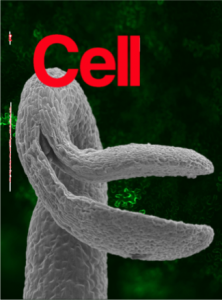The PlantRiboPrints is the portal to our NSF funded project “PGRP-Identification of translational hormone-response gene networks and cis-regulatory elements” NSF-IOS PGRP award #1444561
Jose M. Alonso. Dept. of Plant and Microbial Biology. North Carolina State University
Anna N. Stepanova. Dept. of Plant and Microbial Biology. North Carolina State University
Steffen Heber. Dept. of Computer Science, North Carolina State University
Cranos Williams. Dept. of Electrical and Computer Engineering. North Carolina State University
Summary:

Unlike animals that can seek shelter to escape from bad weather, plants cannot move and must spend their entire lives in one place, rain or shine. Plants are able to adapt to challenging conditions by adjusting how they grow and how much nutrients they take in from the environment. Understanding these adjustments of plants in response to the environmental challenge is important for a basic understanding of how plants may respond in rapidly changing environments and will yield insights about ways to increase agricultural production to support a fast-growing human population. Basic research suggests that plants, like animals, use a small set of signaling chemicals, hormones, to sense the environment, and to control their metabolism and growth. Since hormones play such a key role in regulating plant development and responses to the environment, it is important to identify the main ‘genetic hubs’, where environmental signals and hormonal changes are integrated in order to control a plant’s life. This basic scientific knowledge will improve our understanding of how plants grow and react to stress and will help in the development of new crop varieties that perform well under extreme conditions. Traditionally scientists have studied how hormones influence gene activity by examining gene expression by measuring the copying of DNA into RNA, the first step in the transfer of genetic information into proteins, which play an enormous variety of functional roles in cells. However, an increase in expression does not always mean that more protein will be made because protein production from encoded RNA molecules is a highly regulated process. Fortunately, the recently developed Ribo-seq technology provides the capability of measuring protein production by every active gene in the genome at once. By using this technology, ‘genetic hubs’ that connect environmental sensing with the control of plant growth can be uncovered. Understanding how these hubs work at the molecular level will add new tools to the “biotechnological toolbox” that scientists can then use to develop better and more resilient crops.
You can also visit our Plant RiboPrints website dedicated to this project by clicking here.